

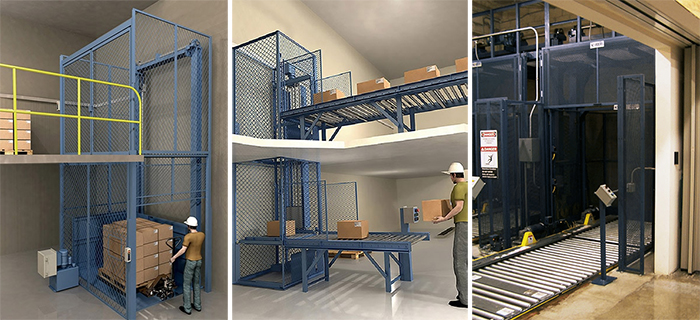
There are many ways to transport products vertically in a warehouse or manufacturing operation, each with its distinctive advantages and limitations. These methods can range from extremely basic – a forklift and a pallet – to fully-integrated, automated systems. Vertical conveyors are one of the most common methods for certain loads and situations. What are some of the integration factors for these conveyors, and how can you handle them?
While we’re discussing vertical conveyors in this article, there are options for vertical transport, including the following factors:
If a VRC is right for you, the next decision is product flow strategy. You can accomplish product transition into a VRC manually, with a forklift, or through automation. Here are some of the options:
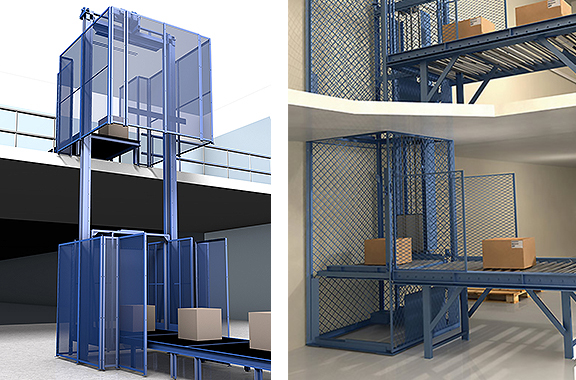
Above: Conveyor lines deliver packages to a vertical lift system.
Conveyor lines can deliver loads to vertical lifts at any stage in the process. Imagine a pick module where
Conveyors transport either cartons or pallets to a VRC for transport to the floor, and eventually to a shipping dock or processing area. Some scenarios include:
Conveyor interfaces minimize manual labor because no one needs to load – or possibly unload – a vertical conveyor at either the entry or discharge point. Loads seamlessly transfer from horizontal to vertical transport. Transfer mechanisms must be robust enough to handle the weight of a moving loaded pallet. When the load elevates, the same mechanism discharges it and waits for the next load in the process.
This process must be fast enough to prevent bottlenecks. Depending on the type of VRC, the load and your product flow strategy, this method is usually fast enough to fit most throughput needs.
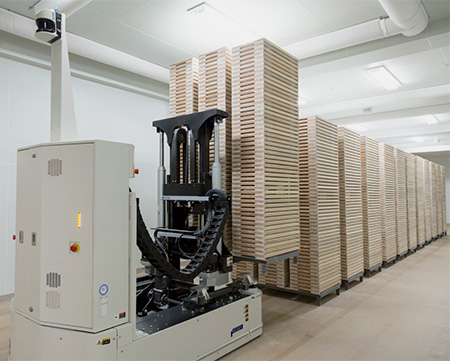
AGVS (automated guided vehicles) can do basically anything a forklift driver can do, which includes delivering products to, and taking them away from vertical conveyors. In form, this isn’t very different from a manual method, but requires more interface work to ensure the AGV can accurately and safely pick, place and pull pallets from the vertical conveyor enclosure and onto a lift platform.
Any considerations a forklift might have for access (clear routes, ramps, safety factors) are also present for most guided vehicles.
AGVs – unlike manned forklifts – can ride on the VRC, then proceed on its way to the next destination. Evaluate your loads, routes, capacities and other factors in advance.
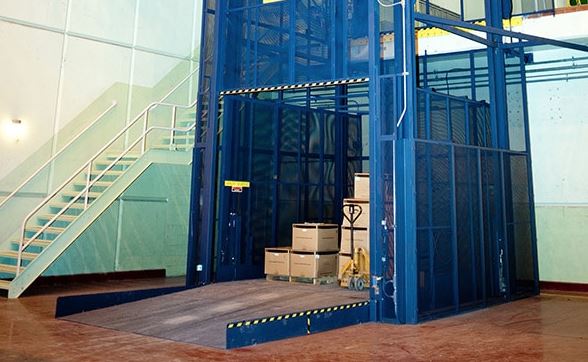
Above: this VRC has a ramp installed, which allows easy access for AGVs, forklifts, pallet jacks, carts or other wheeled transport.
Forklift loading is one of the most common VRC interfaces. While not as automated or as fast as conveyor or AGV integrations, this is a tried-and-true method for depositing and removing loads from a vertical lift. Depending on the process and product flow, there are limitations. If you forklift the load into the VRC, how will those pallets be disposed of on once elevated? This can depend on the process.
When you have a suitable deck surface and adequate capacity, another forklift or pallet jack can be used on the mezzanine. The mezzanine must have adequate point loading capacity.
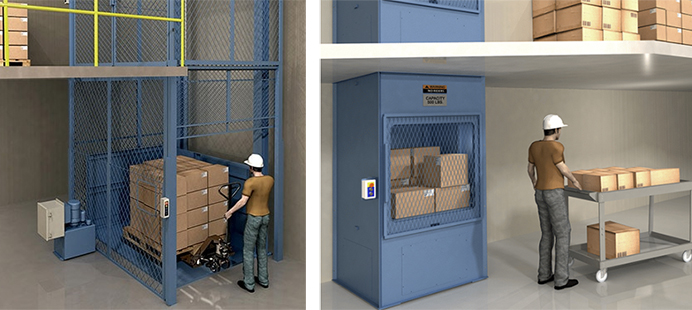
It’s not uncommon to place full pallets of mixed goods near a VRC for manual repalletizing, stacking and transport. This works for processes that don’t require fast throughput and can be executed over time. You tend to see pallets placed outside the enclosure, then stacked, and moved into place with a pallet truck. In some cases, loaded carts with locked wheels can be placed and conveyed vertically once situated. To do this, safety is a critical consideration.
For carts, pallet jacks and other rolling equipment, it is important that adequate ramps are installed to allow for the transition from floor to VRC. Do not place full carts on vertical conveyors without wheel locks to prevent rolling while under transport. Generally, you should deposit a pallet, rather than sending a loaded pallet jack. This can be done with the right loading patterns and safety processes, which can vary by facility.
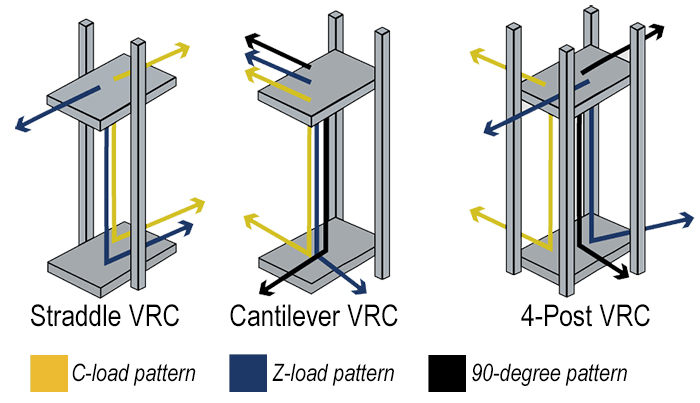
The way you choose to load and unload your vertical conveyor hinges on the type of VRC and its loading options. As shown above, straddle lifts offer two-way loading patterns. The direction of where you take the load once it’s arrived at its destination is limited by the loading pattern. Cantilever and four post VRCs offer more directional flexibility in loading and unloading.
When it comes to the combination of loading method and pattern, flexibility is the key consideration. If you’re loading with a forklift at one level, what is the unloading method at the top or bottom level of the VRC? Review access, ergonomics and safety factors before designing the system.
Some of these methods are cross-compatible with others. For fully integrated VRCs, with ties to WMS and capable of multi-directional movements, control systems can help reduce manual involvement in the process from start to finish.
Scott Stone is Cisco-Eagle's Vice President of Marketing with more than thirty years of experience in material handling, warehousing and industrial operations. His work is published in multiple industry journals an websites on a variety of warehousing topics. He writes about automation, warehousing, safety, manufacturing and other areas of concern for industrial operations and those who operate them.